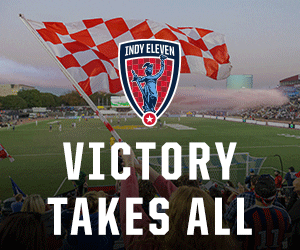A report from The Polis Center at IUPUI shows children born to low-income families in Indianapolis in the 1980s grew up to earn less than their peers in almost any other large city.
The authors of the study note Indianapolis has low economic opportunity overall, but there are also clear disparities when it comes to race and neighborhood.
Black children from low-income families earn $9,000 less than white children at age 35, according to the report, and even children whose parents’ incomes were low could earn more as adults if they lived in a neighborhood with more high-income families. Children from segregated neighborhoods earn less as adults.
Local leaders spoke March 25 at a virtual event to discuss the report and systemic issues related to race and economic mobility.
“People’s mistakes are really irrelevant when they’re in a system that doesn’t work for everybody,” Allison Luthe, executive director of the Martin Luther King Community Center, said at the SAVI Talks event. SAVI is a data system part of The Polis Center.
Low-income children from Indianapolis grew up to earn $27,000 per year on average, the same as their parents’ income 35 years earlier, the report says. That means economic mobility is worse in Indianapolis than any other city in the Midwest, except for Muncie and Anderson.
The report defines economic opportunity as children born to low-income families earning enough as adults to support their household.
On average, white people born in the ‘80s have earned more than their Black counterparts, but the Indianapolis area’s low ranking in economic opportunity is driven by especially poor results for low-income white children, who rank in the bottom half of 1% of all zones in the country for low-income white children.
Outcomes for Black children in Indianapolis are in the 23rd percentile nationally.
Patrice Duckett, executive director of the Fay Biccard Glick Neighborhood Center, said people in her community on the west side work hard every day — not just at a job but in life in general — and still feel stuck.
“They can’t seem to get over the hump,” she said.
Measuring differences between neighborhoods is less straightforward than measuring differences between race because people can move multiple times.
To account for that, the report includes research from Harvard University economist Raj Chetty, who measured intergenerational economic mobility of children who move between neighborhoods at different ages.
“As it turns out,” the authors wrote, “every year that a child spends in a disadvantaged neighborhood has an incrementally negative effect on their outcomes as adults, regardless of their race, income, or other demographic characteristics.”
That means a child who moves to a higher-opportunity area at age 6 is better off in adulthood, on average, than a child who does so at age 7.
The authors suggest public-private partnerships as a way to increase four types of capital within communities: physical capital (infrastructure such as roads), human capital (health, education, etc.), technology capital (software, expert knowledge, etc.) and labor capital.
Public interventions such as direct cash payments and development grants can come from governments, the authors wrote, and private intervention could include small business loans and banking opportunities.
“These and other opportunities allow families the opportunity to achieve economic mobility within their own communities,” the authors wrote, “encouraging economic investment, stabilization, and growth in these areas.”
The report — “Equity in Economic Opportunity How Race, Place, and Class Impact Economic Mobility in Indianapolis” — is available at savi.org.
Contact staff writer Tyler Fenwick at 317-762-7853. Follow him on Twitter @Ty_Fenwick.










